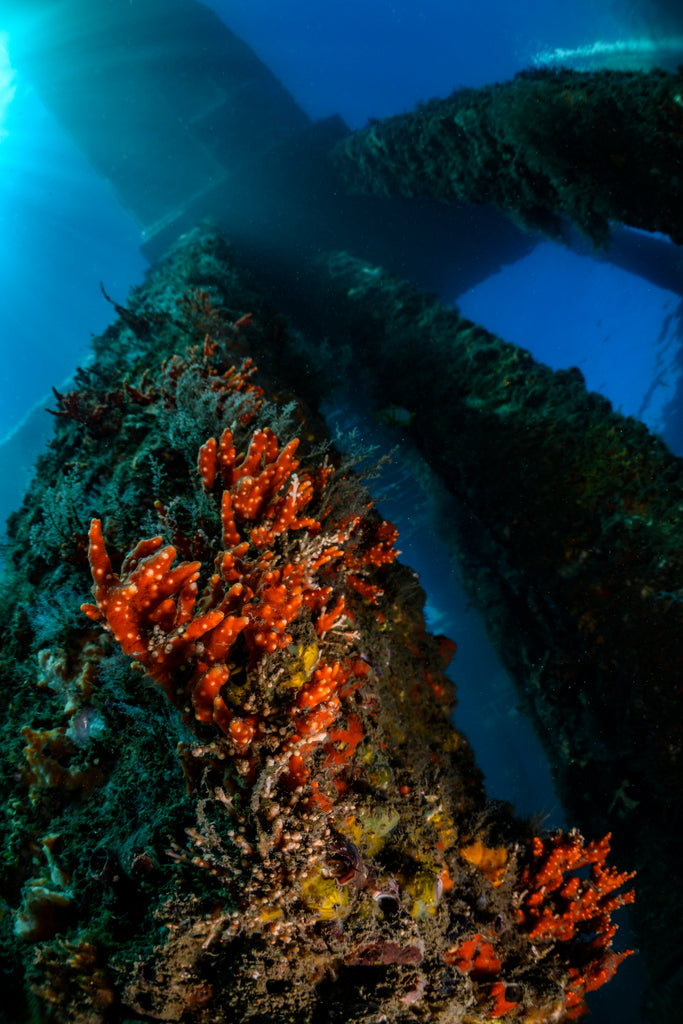By: Todd Winner
With Nikon's release of their first full frame mirrorless cameras this year, the Z7 and Z6, I was excited to get one in the water and see how it performed. Sony has dominated the full frame mirrorless market for several years now. They are on their third generation of the A7 line and have made many refinements from one generation to the next. So the question was, could Nikon's first FF mirrorless compare to what Sony has been releasing?

Z7 with the 60mm macro and MWL-1
I'm happy to report that I think they have. Yes, there are some things that could probably be improved, but if you are a long time Nikon shooter that has been waiting for a FF Mirrorless, I don't think you will be disappointed. The Z7 and Z6 share the same button layout and both will fit in the Nauticam NA-Z7 housing. The Z7 is the high resolution model with 45.7 MP and the Z6 has 24 MP with a faster max frame rate.

Z7 with the 60mm macro
I was able to make three dives to test out the Z7 with the FTZ mount adapter and a AF-S Micro 60mm f/2.8 lens. I also got a chance to try out the new Nauticam Macro to Wide Angle Lens 1 (MWL-1). This awesome wet mounted lens converts your 60mm macro lens into a 150° wide angle lens! To round things off I had the Super Macro Converter 2 (SMC-2) with me as well. So in theory I would be able to shoot wide, macro and even super macro all on the same dive!

Z7 with the 60mm macro and MWL-1
Nikon Z7
The menu system, button layout and feel of the camera is typical Nikon, well built and simple to use. The image quality to me looks fantastic. The auto focus system is not as sophisticated as the D850 or D500. There is no 3D focus tracking but there are more autofocus points, especially on the Z7. 493 phase detection points compared to the D850 153 points. I used back button focus with a single point set on Continuos-Servo AF (C). I also had a manual focus gear that I used to fine tune the super macro shots. I thought the auto focus system, the way I was using it, worked well but this is one area that may need some improvement. A few times I thought the camera hunted more than it should. I was using it with an F mount lens and an adapter so a native Z mount lens may perform better.

Z7 with the 60mm macro and MWL-1
NA-Z7
The Nauticam NA-Z7 gives you access to all the controls and is extremely ergonomic. I really appreciated the easy to use lever for switching between the EVF and LCD, a crucial and much used control with mirrorless systems. The housing was designed not only to use the new Z mount Nikon glass, but also the F mount lenses with the Nikon FTZ Adapter. The NA-Z7 comes with Nauticam's self powered manual flash trigger preinstalled. The flash trigger plugs into the hot-shoe of the camera and uses LED lights recessed into each of the two optical bulkheads to trigger supported underwater flashes when used with the correct fiber optic connection. The flash trigger can be upgraded to support TTL triggering (PN 2638 TTL Converter for Nikon). I used the system with an electronic bulkhead installed and two ikelite DS160 strobes. When using a manual trigger most cameras don't recognize that a flash is connected. Make sure not to increase your shutter past the maximum sync speed of 1/200 on the Z7. Another control you may want to disable when using a manual flash trigger and shooting macro is "d8: Apply settings to live view", in the custom settings. This will allow you to still see the image with typical macro settings but it will no longer give you an exposure preview.

Z7 with the 60mm macro and MWL-1
MWL-1
The Macro to Wide Angle Lens 1 is Nauticam's latest underwater optic and it is amazing! It is a wet-mounted ultra wide lens (meaning it can be attached and removed underwater) designed to be used with a 60mm full frame equivalent macro lens that results in an ultra-wide 150º field of view. The MWL-1 can focus from the lens' front element to infinity. Because of it's compact design it is easy to light subjects close to the front element. Never again do you need to miss out on a wide angle opportunity on a macro dive. You can also capture unique close focus wide angle images of macro subjects. This technique works best when a macro subject can be placed very close to the lens where exaggerated perspective makes it pop out from an ordinary background. The MWL-1 excels at smaller apertures and full-frame shooters will get optimal results at F16 or higher.

Z7 with the 60mm macro

Z7 with the 60mm macro and MWL-1
SMC-2
The 60mm macro lens on its own offers a life size 1:1 maximum magnification. It has a short minimum focusing distance so most diopters don't work well with it. The high magnification of both the SMC-2 and CMC-1 allow for a bit more magnification from the 60mm macro, approximately one third more.

Z7 with the 60mm macro and SMC-2

Z7 with the 60mm macro

Z7 with the 60mm macro and MWL-1







